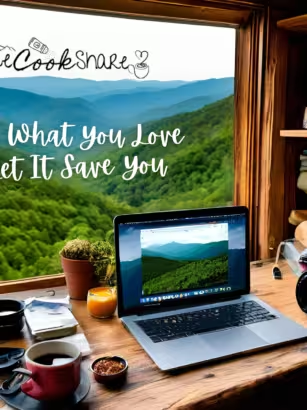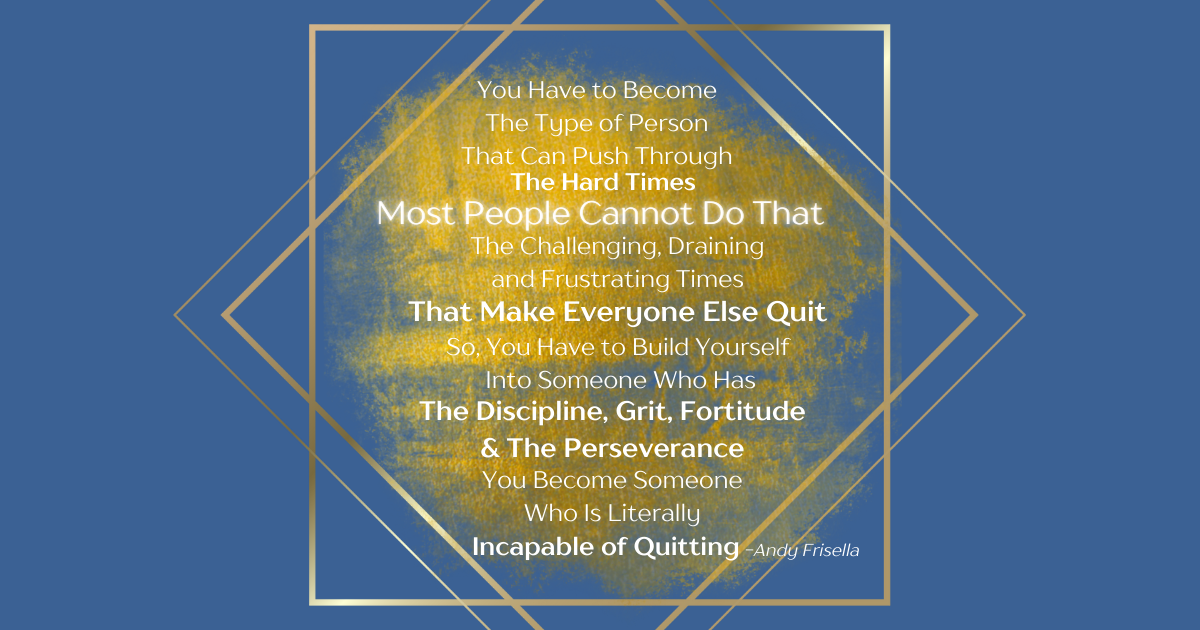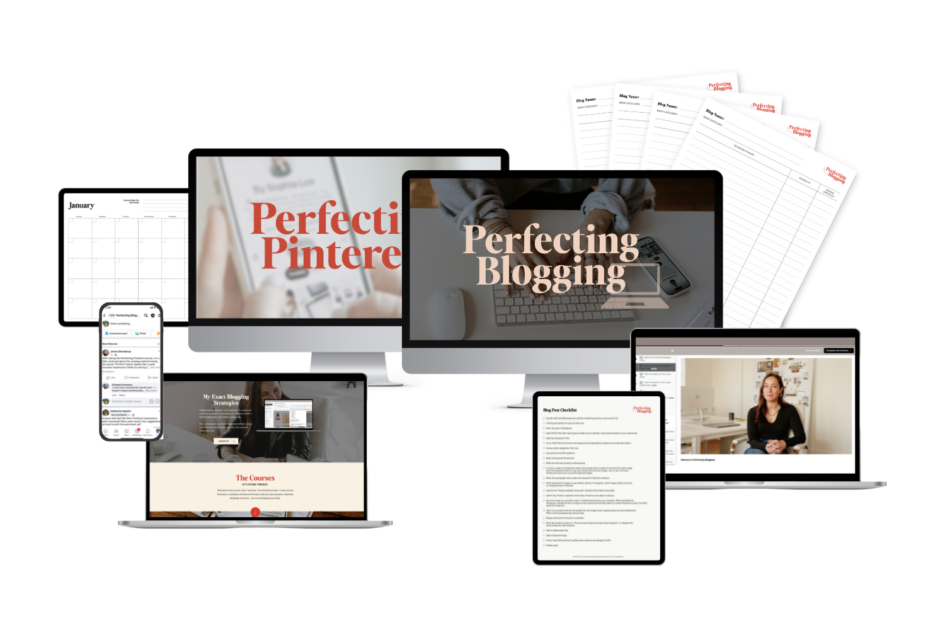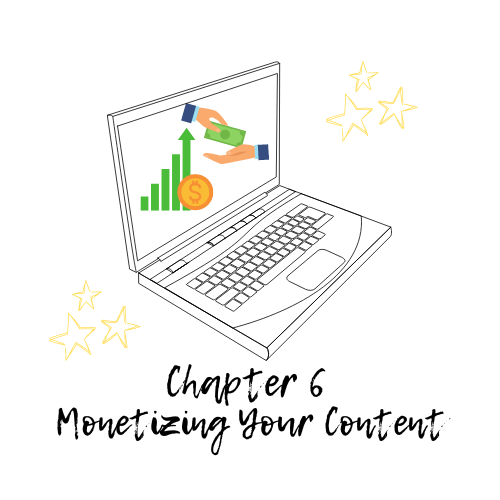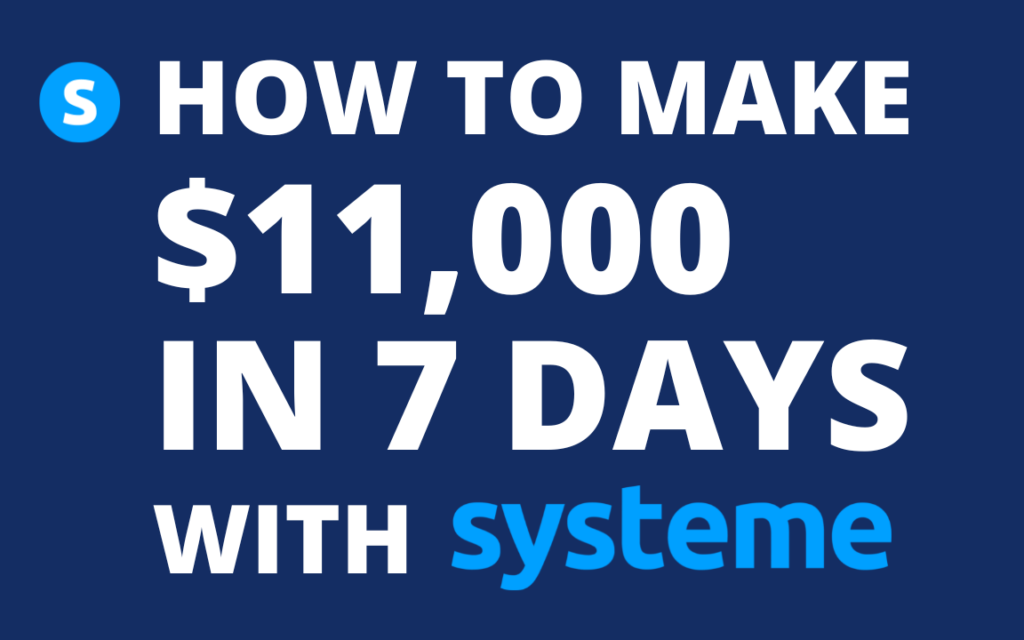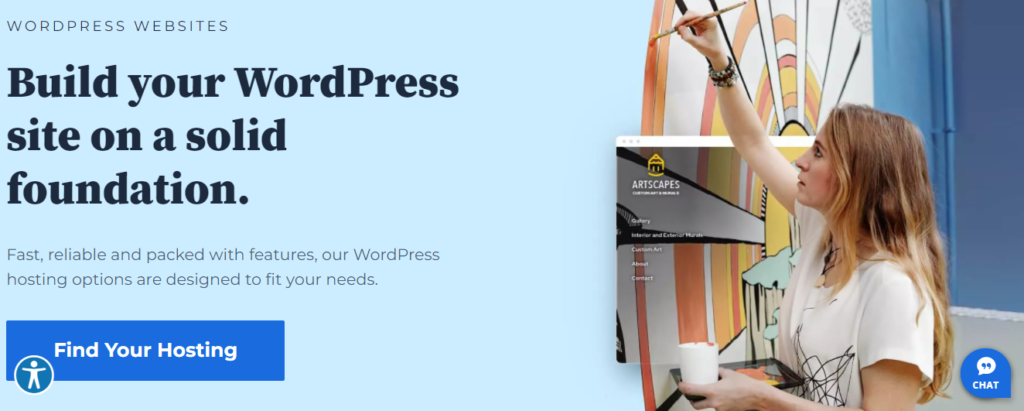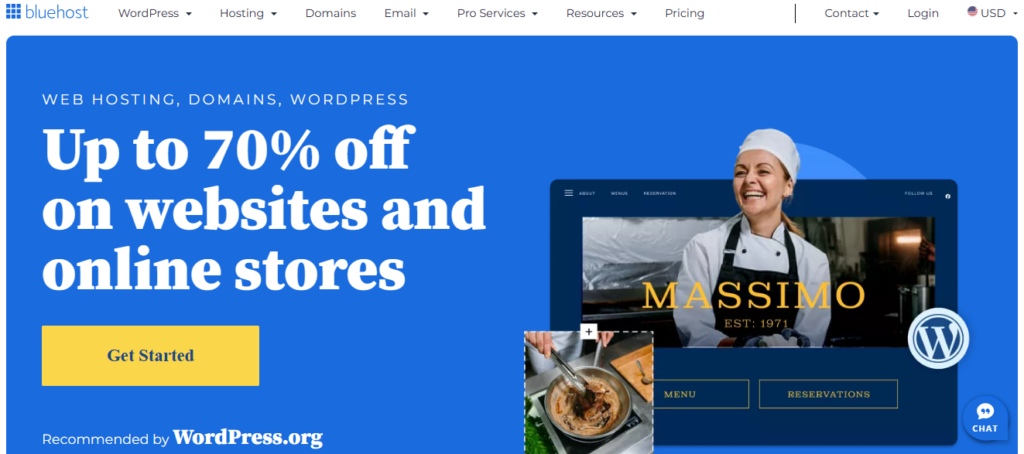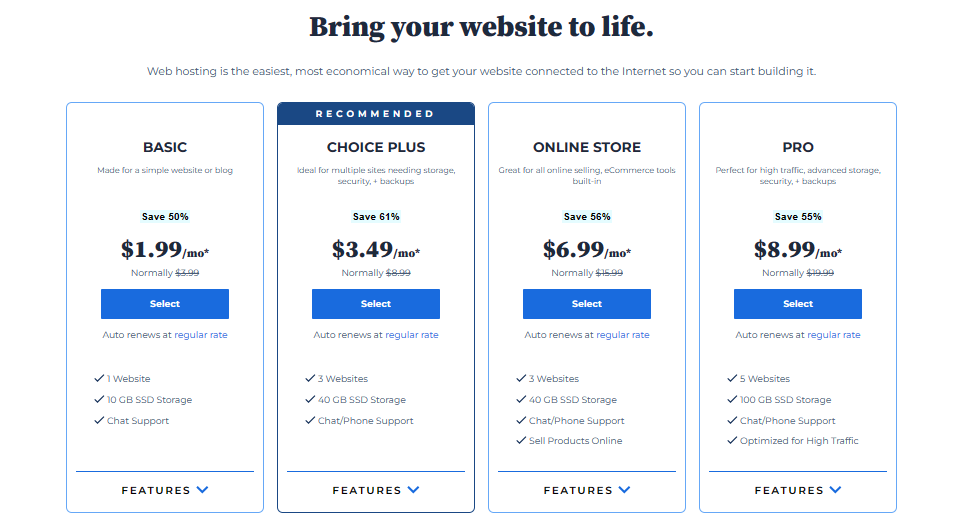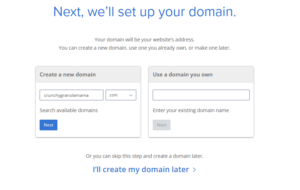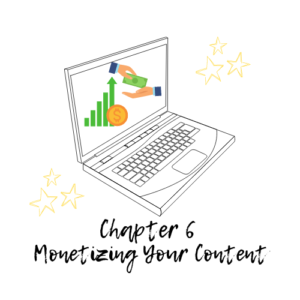This article may contain links from my partners. I may receive a small commission if you make a purchase through a link. Please read my disclosure and how I make money here.
Since you are here you’ve probably been searching how to start a blog and make money. I’m here to share tips from a lens of a complete beginner and am proof you can have a successful online business!
Skip the struggle bus I rode on as a beginner blogger and follow my guide to ensure you start your blog correctly and with confidence.
Be sure to subscribe and pin this post for later reading. There is a lot that I cover in starting your blog and learning how to earn money online.
In this my step-by-step guide, I will demonstrate exactly how to get set up your blog, generate income passively and how blogging has changed my life!
When I started Hike Cook Share I had no idea the ways I could potentially make money. Some would say it is pretty passive to make income blogging however, a lot of work goes into researching, writing and creating the content.
That’s one of the reasons this blog has been so successful; it has become truly a labor of love.
What also attracted me to blogging was I wasn’t selling a product, working for someone, or stressed about making money right away.
So. if you’re thinking blogging is a get rich quick sort of deal, you may be quite disappointed to find out how much work blogging entails.
When I started out on this blogging journey, I had the mindset that if I were consistent and put the work in, I would be successful.
There is so much free information (including my guide) on the internet but after 2 years of blogging, I decided it was time to invest in myself and in order to learn how to earn money from home, I would have to obtain the skills through education.
I recommend the Beginner’s Blogging Bundle by Sophia Lee blogging course; it helped me a lot and is one of the best blogging courses for beginners!
In the bundle of dreams, Perfecting Blogging and Perfecting Pinterest will teach you the strategies you need to know to hit the ground running. Perfecting Blogging covered tried and true SEO strategies. Sophia’s secrets to (quickly) creating professional blogs, and her fail safe formula for crafting blog posts that are guaranteed to captivate your audience.
Perfecting Pinterest provides in-depth insights into her proven strategies for driving website traffic from Pinterest, optimizing blog posts for Pinterest traffic, and her secret techniques for time-saving content uploads to Pinterst and more!
These courses are perfect for bloggers just starting out or any blogger who hasn’t been seeing the results they want and is ready to take off!
Tip: There is a lot to learn and digest in my post. Don’t feel like you need to read all of this today.
Pin my post and come back for guidance whenever you’re feeling ready or overwhelmed.
I’m not going to lie, If you want to find out how to start a blog that makes you money, there is a lot of work that goes into it.
Starting a blog may take you less than an hour to set up, but building a successful blog that will earn you money can sometimes take months or even years.
Chapter 1: Selecting A Niche
What is a blog and how do you select a profitable niche?

Chapter 2: Setting Up Your Blog
Step-by-step how to set up your blog

Chapter 3: Creating Content
Tips on creating content your readers are searching for.

Chapter 4: Pinterest
Why Pinterest is the best marketing tool, how to use it and create pins.
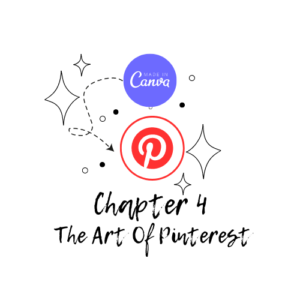
Chapter 5: Mastering Google
How to get your site recognized by Google by SEO.
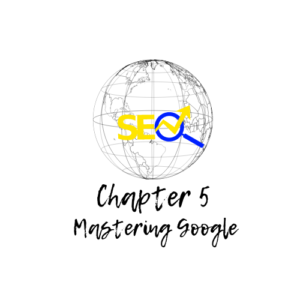
Chapter 6: Monetizing
Ways to make your blogging profitable.
Chapter 1: Selecting Your Niche

What is a niche?
It’s the topic that is your primary focus. You want a niche that your confident in talking about, something you have experience in and can offer solutions to your readers.
Who is your target audience?
Is your niche about home decor, automotive, raising babies? Know your audience and what questions you use to google before becoming the Pro that you are now!
How can you make money blogging?
There are a few options here.
- Apply for affiliate programs. There are so many, make sure you keep a list to stay organized.
- Apply for an ad company.
- Offer a course in your niche.
- Sell E-books, Recipes, Photography, Clothing
- Become a virtual assistant
What is affiliate marketing?
It is a program that you apply to in order to promote a company’s product that you are endorsing.
Most major stores have them, you have to look on the company’s page.
You will receive a unique link and you just plug it into your product that you’re endorsing.
Don’t get discouraged if you get rejected; most times the company is looking for improvements that can be made. You can always email the company and ask or reapply when you have more content or traffic.
Bigger stores are a part of an affiliate program such as Impact or ShareaSale.
I suggest keeping a notepad with all the programs and networks you are in to keep them organized.
Also, I only promote products that I love and have purchased myself. Honestly is the best policy when promoting.
Why apply to an ad company? What are the requirements?
There are some requirements such as content and sessions but definitely something to look into if your wanting to create passive income.
I like to think of adding an ad company to my blog as a little bonus.
Start with applying to Google AdSense – you can generate a lot of income if you have the page views.
How are you driving traffic to your site?
There are a few ways of doing this –
- Your social medias – put your linktr.ee in the bio and be done or self-promote with your own posts.
- Pinterest – creating pins that are eye catching and driving that audience to your posts.
Are you willing to invest?
Owning your own website comes at a cost. The initial set up fees, the courses you can take, the ingredients or products you want to endorse.
As an affiliate with Bluehost, using my link means I may earn a commission from them. This helps support the maintenance of this guide, keeping it free and up-to-date for you. Please be assured that I only recommend products, tools, or services that I have personally used and genuinely love!
What is a blog?
A blog is a type of website ranging from specific topics of personal experience to professional insights, news, tutorials.
Blogs are a great way to express knowledge, build a community, promote products, services and generating income through advertising or affiliate marketing.
Should you start a blog?
Yes! Blogging has changed every aspect of my life – it has challenged me in more ways than just learning to write. Starting a blog today is the easiest ways to make money online- it does take time and consistency but, in the end, when you see results – it is worth it!
I found so many interesting ways to make money online but was seeking something that would fulfil me and my creative side and generate income.
I ran across so many women, who were making this a reality for their family.
Some women could stay home and homeschool, some travel every day, and some were paying off debt.
I thought this just seemed too good to be true, what are they selling?! Hair products…a water filter…. No (thank goodness) … but they were self-promoting and I’m all about that!
I’ve always dreamed of being my own boss.
What did these women have in common?
That’s right, a blog! Sounded easy enough. Before I jumped in, I knew I had a lot of self-reflection and research to do.
I found that I could generate some money with no experience. If I could do it, so can you!
TIME. Where would I find it?
I consider myself a pretty busy bee- with two littles under the age of 3, working full time, trying to be present and enjoy all the moments. Another obstacle I was trying to overcome was how in the world would I find the time to blog? It all sounded very challenging.
I was determined. I knew I had to show up for myself.
I wrote late at night, during nap times, adding an hour to my work time during the day. I made it work and so can you!
Establishing goals.
What are you wanting out of your blog?
- What is your niche?
- Who is your target audience?
- A way to make money passively?
- Are you willing to invest?
- Do you have the determination?
- Steps on setting up your blog?

Setting up your blog for success.
To generate money, you will need to sign up for a self-hosting site – I 100% recommend BlueHost. Their customer service is hands down the best out there.
They have a chat service that can help you through a lot of obstacles you may encounter as a newbie.
WordPress wanted to create some confusion and have a WordPress.ORG and WordPress.COM – two very different websites.
In order to monetize – a fancy word for generating income – you need a self-hosted web server. Which is why you want to go with BlueHost, the server for WordPress.ORG
When you purchase BlueHost you actually own your own website! The earning potential and the freedom to customize is unlimited.
1. Pick your domain name
Picking out your website name can be the most tricky – you definitely want it be catchy, on topic with your niche, easy to remember and memorable.
You’ll also want to make sure your domain is available and not already registered.

If you’re having trouble deciding, you can change your domain down the road, which is what I choose to do to niche down into the food blog I am today! I also share lifestyle posts such as tips on blogging, local hikes and anything that I feel will help my audience.
Why Choose WordPress.org?
WordPress.org is the most popular website platform in the world. It powers around 30% of all websites in the world, offering flexibility for design and monetization.
- There is a bit of a learning curve to WordPress.org vs the other blogging platforms such as Wix, Squarespace or Weebly.
WordPress.org is free, so next you will need a host to keep your files on a server.
What is a webhost?
Hosting is where your data will be stored.
This option does come at a cost, but you won’t be able to monetize unless you own your own website.
Reasons why you should use Bluehost
- It’s the #1 recommended web hosting company by WordPress.org
- You get a free domain name when you buy a 12 month plan.
It is the best affordable hosting for beginners if you are just starting out and have limited resources to invest into your blog.
Bluehost is only $2.95 a month through my link if you sign up for 36 months.
Click here to head over to Bluehost & hit the “Get started now” button to choose your package.
With Bluehost, you get a year free of SSL “”Secure Sockets Layer,” is a cryptographic protocol designed to secure the transmission of data over the internet. It provides a secure and encrypted connection between a user’s web browser and a website’s server.
If you don’t pay for it, your personal contact information could be used by marketers and spammers to send you unwanted emails. Ugh!
Next, you will want to choose your domain name.
The choice of a domain extension depends on the nature and purpose of your website, as well as your target audience. Here’s a general guide for when to use different domain extensions:
- 1. .Online, .Site, .Space:
These are versatile and can be used for a variety of websites. They are suitable for businesses, personal projects, or any website looking for a modern and generic extension. - 2. .Tech:
Ideal for websites related to technology, startups, or any business with a focus on innovation and tech-related products or services. - 3. .Store:
Specifically designed for e-commerce websites. This extension is suitable for online stores and businesses that sell products. - 4. .Blog:
Perfect for bloggers or websites primarily focused on publishing content. It’s a clear indicator of a blog-style website. - 5. .Net, .Org:
These are generic extensions suitable for various types of websites. Historically, “.net” was associated with network-related sites, while “.org” was often used by non-profit organizations. However, both are widely used for any website. - 6. .Info:
Suitable for informational websites. If your site is primarily focused on providing information or resources, the “.info” extension can be a good fit. - 7. .Co:
Originally intended for companies, this extension has become popular for startups and businesses as an alternative to “.com.” - 8. .US, .Biz:
“.us” is the country code top-level domain (ccTLD) for the United States. It’s typically used by entities based in the U.S. “.biz” is a generic extension often associated with business-related websites. - 9. .Club:
Suitable for social clubs, community groups, or any website focused on bringing people together around a common interest. - 10. .CA.UK
The country code top-level domain (ccTLD) for the United Kingdom. It’s ideal for businesses or entities operating within the UK. - 11. .NYC:
Specifically for websites associated with New York City. It’s a city-specific extension suitable for businesses, organizations, or individuals based in NYC. - 12. .Eu, .Ca, .In:
These are country code top-level domains for the European Union, Canada, and India, respectively. They are suitable for websites targeting audiences within these specific regions.
Install WordPress
Bluehost makes it easy to create a WordPress blog and will automatically install WordPress for you.
Next you will be able to pick your website theme and start creating content.
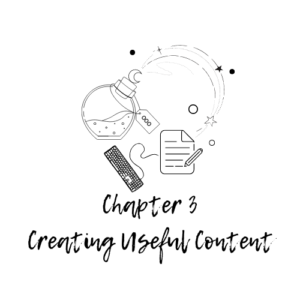
Yay! You’ve made it this far, you are determined to make this work!
So you want to know the secret to making viral content?
Write useful, in depth, content that people will save and come back to – it’s all about quality over quantity.
Like in Chapter 1, narrowing down your niche is important so that you know who your audience is and is easier for your to provide them with helpful content so they return for your content.

Let’s recap on where we’re at here.
By this point, you have a domain name, hosting and you’ve set up your wordpress blog with a simple and easy to navigate theme. You might have written your first post- if you have thats a great start!
But guess what, no one will discover your posts until you promote them.
When I was starting out, I read that you need 20% of your time creating your posts and the 80% needs to be promoting.
Why you need people to read your blog
The equation is simple:
TRAFFIC = MONEY
No matter what type of monetization you pick, you still need a good number of people to care about what you have to say to make money.
How much is a good number?
No matter what way you choose to make money online, the key is having a bunch of people genuinely interested in what you’re sharing.
Now, you might be wondering, how many is a bunch? Well, there are different opinions on that. Some say you only need a small group, while others swear by aiming for millions.
Here’s my take: Making a decent living could be doable with just 1,000 loyal fans. But imagine the possibilities if you had 10,000 or even 100,000 fans cheering you on.
Let’s break it down a bit. Picture this: Your blog gets around 5,000 visitors every month, and these folks are really into what you’re saying. You create a product that solves one of their problems, and every month, you manage to convince just 1% of them to buy a $100 product. How much could you make?
Well, that’s $5,000 a month right there.
So, the point is, you don’t necessarily need millions of people to bring in a decent income. But what if you had 50,000 people tuning in? Suddenly, that $5,000 a month could turn into $50,000.
And that’s what’s so great about blogging: Once your blog is up and running, the more people you get on it, the more money you can make.
I’ve got blog posts from two years ago that are still making me thousands of dollars every month. It’s like the magic of passive blogging income!
And with things like ads and affiliate marketing, the more eyes on your blog, the more money you can rake in.
So, bottom line, we need people.
There are tons of ways to promote your blog, but one of the quickest and easiest ways, especially when you’re starting out, is to hop on the Pinterest train.
Pinterest worked wonders for me, bringing over 180,000 page views to my blog in just three months, and now it consistently delivers between 150,000 to 200,000 page views every month.
What is Pinterest?
It’s not just a social media platform; think of it more like a visual search engine. You search for and save cool ideas there.
The images you save are called pins. A pin is like a visual poster that grabs people’s attention on Pinterest and makes them want to check out your post when they click on it.
You can organize your pins into different boards, kind of like folders for different topics. And the cool thing is, every pin you save on your boards links back to the original website, so people can easily find the source for more info or to buy stuff.
If you’re a creative type, like a blogger or a business owner, you can open a business account on Pinterest and start promoting your blog posts for free.
All you gotta do is make eye-catching pins that link to your blog posts.
So, if you want to get traffic to your blog fast, and Pinterest is new territory for you, I’d say dive in and become a Pinterest pro right away.
Now, you might have heard people saying Pinterest isn’t what it used to be a couple of years ago. And yeah, it’s a bit tougher to get traffic from Pinterest nowadays compared to just a year ago.
Pinterest is trying to keep people on their platform, so things like videos and Pinterest stories don’t make it as easy for users to click through to our blogs.
But don’t get me wrong, Pinterest is still alive and kicking!
It can still bring in enough traffic to help you qualify for advertising with Mediavine or other ad agencies. There are plenty of bloggers who started just six months ago and are making money through advertising, all thanks to Pinterest.
Sure, it might take a bit longer, but if you follow the steps below, you can still get that traffic flowing.
Setting up a business account is a piece of cake. Just follow the instructions on Pinterest.
Oh, and can you turn your personal Pinterest account into a business one? Totally! It’s a breeze.
Just log into your personal account on your laptop, click on the three dots at the top-right of the screen, and follow the steps.
But here’s a heads-up: Before you do that, make sure your personal Pinterest profile aligns with your blogging niche. If you’ve been pinning your kids’ birthday cake ideas for years and now your blog is all about fitness, maybe hold off on the conversion.
On the flip side, if you’ve been passionately pinning vegan recipes and you’re starting a vegan food blog, go for it.
But remember, in the grand scheme of things, there aren’t many perks to converting a personal account into a business one. Followers don’t matter much on Pinterest, and starting fresh helps you build a more relevant account.
Now, let me tell you, not many people will actually check out your Pinterest profile. Pinterest is more of a visual search engine; people usually stumble upon your pins while searching for something. They might never even see your profile.
Still, it’s a good idea to make your profile look pro. To edit it, just log in and click on “edit info.”
Choose a relevant photo, add your blog’s name as your display name, and write a short, sweet 160-character description about your blog. Remember, it’s all about how you can help others solve their problems. Your Pinterest profile is no different.
Ever heard of Rich Pins?
They’re like an upgraded version of regular pins, loaded with more info. There are four types: app, article, product, and recipe pins. Rich Pins provide extra details about your post, making them more attractive to pinners.
Setting up Rich Pins for your blog is a smart move. If you’re tech-savvy, check out Pinterest’s page on it. If not, no worries—there’s a handy blog post with a simpler explanation.
Pinterest boards are crucial.
They are a collection of your pins, letting you organize your content into different ideas and topics. Think of them as distribution points for your content and destinations for people to find useful stuff about your main topics.
Creating your first board is easy. Click on your Pinterest profile, select “Boards,” hit the big Plus button, write a name for your board, and add a description full of keywords related to your board’s theme. Pick a category, hit save, and voila!
You’ve got your first Pinterest board.
How many boards should you start with?
Well, as soon as you have a few blog categories in mind, you can start creating your Pinterest boards. You don’t even need to have blog posts written yet. Starting early helps you figure out what topics are popular on Pinterest in your blog’s niche.
Here’s a quick breakdown of the number of boards you should aim for:
1. Create a main Pinterest board for each of your blog categories. For instance, if your blog covers food, travel, and money, have a board for each. These should only contain your own content.
2. Add as many boards about relevant subcategories as possible. Start with a minimum of 20-30 boards for your blog. For example, if your money category has subtopics like saving money, making money from home, financial freedom, etc., create boards for each.
Fill them with at least 20-30 relevant pins from other bloggers to start. This helps Pinterest understand your boards and makes your profile more relevant to those topics, even before you start creating your own content.
Now, about group boards.
These are boards owned by others who invite you to pin on them. It used to be a fantastic way to get your pins in front of more people when you were just starting out.
A few years ago, Pinterest gave a lot of weight to pins on group boards. If you got onto a board with lots of followers, your pins had a better chance of taking off and reaching thousands of people quickly.
But times have changed. Pinterest now values your own boards and profile more. That’s good news because if you set up your boards correctly and use the right keywords, you won’t need to stress about joining group boards as much as you once did.
I’ve personally stopped pinning to group boards altogether, and I’d suggest you do the same. Focus more on creating and optimizing your own boards.
Alright, let’s talk pin design.
Your pin’s design can make or break your success on Pinterest.
But here’s the big question: How do you create pins that people actually want to click on?
Now, I’ll admit something I don’t usually shout from the rooftops: My first pins were pretty terrible. If you saw them, you might think I was a graphic designer in a past life, but that’s far from the truth.
Don’t believe me? Take a look at these pins. Brace yourself—they’re not pretty!
Would you click on those? Yeah, not many people did.
I made a few mistakes:
- The font was too small and hard to read.
- The image on the first pin didn’t match the topic. Your image has to be on point, or you’ll just confuse people. Yes, being provocative can work, but pinners scroll through their feed pretty fast, and if they see something irrelevant, they’ll keep scrolling.
- For recipe pins, you want your food to be the star. Zoom in, show exactly what the final dish looks like. I kept my photos too wide and not detailed enough.
Like anything in blogging, you learn from your mistakes.
What really helped me was:
- Spending time checking out successful Pinterest accounts to see what worked.
- Scrolling through my Pinterest feed for hours, saving pins that caught my eye. Why did I stop? What made me click? Was it the font color, the wording, the image? Learn from your own experience and replicate what works.
- A few trips to bookstores. Think about it—book covers and magazines are like pins. They need to stand out among a sea of others. Publishers spend big bucks on design, and you can get inspiration for free. Just go to your local bookstore, look around, and use those designs as inspiration.
If you see someone snapping pics of book covers, it might be me, haha.
After a few weeks of doing that, my pin design drastically improved.
Now, the perfect pin has a certain anatomy.
It should be at least 1000×1500 pixels in size, with relevant images, easy-to-read fonts, bright colors, and a simple background.
Intriguing titles, your website logo on every pin, and helpful descriptions are also key. And remember, check how your pins look on mobile—over 80% of Pinterest traffic comes from mobile users.
For my pins, I use a combo of Canva and Adobe Spark. They’re a bit pricey, but I love them. If you’re not ready to invest, lots of bloggers recommend using Tailwind Create, a free tool with templates to get you started.
Pinterest is a goldmine if you’re willing to put in the time and effort to understand it.
When I started my blog, I knew mastering Pinterest was the first step.

Starting my journey as a new blogger, I found myself grappling with a daunting challenge – the sheer volume of things to learn felt like a daily brain explosion.
From keeping up with Pinterest to wrapping my head around the enigma that is SEO, it all seemed overwhelmingly technical and out of my league.
SEO, in particular, was this mysterious concept I wasn’t even aware of initially.
However, the realization hit that relying solely on one traffic source for my blog was a risky game. If Pinterest decided to change its algorithm or, worse, close my account (which can happen), I stood to lose everything overnight.
But let’s back up a bit. What exactly is SEO?
SEO stands for search engine optimization, and it’s all about getting traffic from search engines like Google, Yahoo, and Bing.
Now, Google is the big player here, claiming over 79% of all organic traffic and processing a mind-boggling 5 billion searches every day.
Just think about the transformative power that even a tiny slice of that traffic could bring to your blog’s earning potential.
Recognizing the potential traffic, I could be missing out on, I decided to dive headfirst into the world of SEO.
Fast forward, and now over half of my blog’s traffic comes from Google.
How did I pull off this traffic magic trick?
Unlike the instant gratification of Pinterest traffic, Google’s organic traffic is more like a slow-cooked dish – it takes time to build.
Google needs to trust your website, and that trust-building journey demands patience. It could take anywhere from six months to a year before you start seeing a significant uptick in organic traffic.
But when done right, the payoff is worth it – free, focused traffic that comes with several perks:
1. Targeted Audience: Google traffic is like a laser beam. Unlike Pinterest visitors casually scrolling without a clear purpose, Google users are on the hunt for information or solutions. This makes them much easier to convert into affiliate product customers or email subscribers.
2. Passive Nature: Once you’re on Google’s good side, you don’t have to constantly jump through hoops to maintain that traffic. No need for a constant stream of new pins and boards like on Pinterest – it’s a more set-it-and-forget-it scenario.
3. Consistency: Google traffic is the reliable friend who doesn’t change plans every five minutes. Yes, Google algorithms do change, but not with the frequency of Pinterest. It’s a more consistent and steady flow of traffic.
Now, let’s get into the nitty-gritty of how to tap into this magical world of SEO traffic:
1. Mastering Keyword Research:
When you’re just starting, it’s crucial to decide what your blog should be known for in Google’s eyes. While Pinterest allows for success in diverse topics, Google prefers a more focused approach. Niche down, and Google sees you as an authority, boosting your chances of ranking.
For example, if your blog is all about quick and easy family recipes, target keywords like:
– Easy dinner recipes
– Quick recipes
– Family meals
– 10-minute meals
Create content around these specific keywords to establish your niche authority.
Tools like RankIQ is a one-of-a-kind SEO toolset build just for bloggers.
Their 1-year study showing that Mediavine blogs using RankIQ increased their Google traffic 468% more than the Mediavine blogs not using RankIQ.
2. Embrace Long-Tail Keywords:
Long-tail keywords (four or more words) are your best friend as a beginner.
They let you create more specific content, making it easier to rank quickly. For instance, it’s much easier to rank for “Gluten-Free Pasta Recipes” than the generic “Pasta Recipes.”
Make sure to choose keywords with an SEO difficulty below 30-40 when starting. This ensures a realistic shot at reaching page 1 of Google, where the bulk of the traffic hangs out.
3. Understanding User Intent:
User intent is the secret sauce in keyword selection. Check the first 10 results on Google for your chosen keyword to understand what users are looking for. Tailor your content to match the preferred type – whether it’s a list of recipes or a detailed recipe guide.
Consider checking the Domain Authority (DA) of competitors on page 1. As a new blogger with a starting DA of 1, aim to outshine competitors with similar or slightly higher DAs by delivering exceptional content.
4. Crafting Comprehensive, Optimized Content:
Creating epic, optimized content is the key to Google’s heart.
Research the first 10 Google results for your keyword. Develop an outline covering every possible user question related to the keyword, ensuring your content stands as the most comprehensive guide available.
Optimize your content with related long-tail keywords, incorporate internal links, and provide external links to relevant sources. This not only appeals to readers but also makes your content irresistible to search engines.
5. Generating Backlinks:
Backlinks are the golden ticket in Google’s ranking world. They signal trustworthiness and authority. Actively promote your content to create backlinks through strategies like social media sharing, guest posting, and outreach to other bloggers.
In a nutshell, the SEO game plan is as follows:
1. Find high-volume, low-difficulty keywords.
2. Align with user intent to keep Google smiling.
3. Create top-notch, comprehensive content.
4. Shout your content from the rooftops to generate backlinks.
Follow these steps, and you’ll pave the way for Google to recognize your blog’s relevance, rewarding you with a steady flow of organic traffic.
It’s like having a friendly stream of visitors knocking on your digital door – and who doesn’t want that?
A few great ways of marketing your content would be through Tailwind Communities, Facebook groups and Pinterest of course! I have other social media platforms such as Instagram and Twitter but find my audience hangs out in those 3 platforms and I put my time and effort into those instead of the others.

